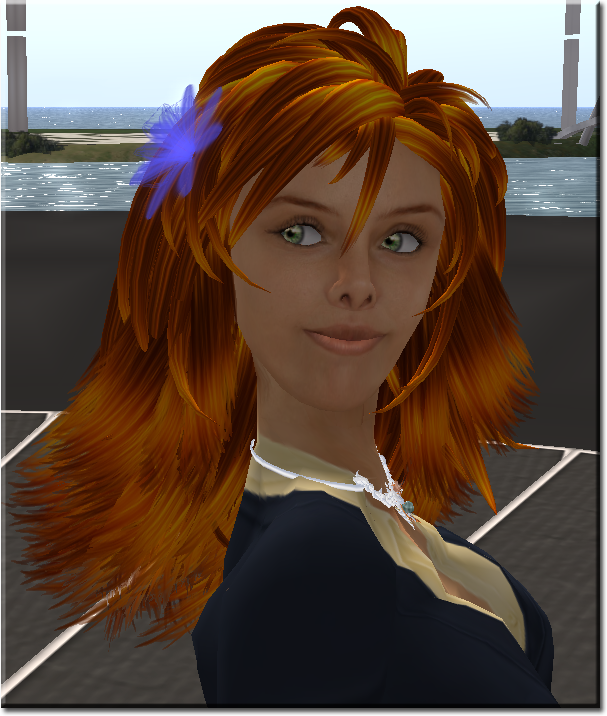Perhaps I should blog a bit more here…
 There seems to be so much I have to do these days, that blogging has been really on the backburner…
There seems to be so much I have to do these days, that blogging has been really on the backburner…
I’ve decided to post here a new article just to make sure people know that we’re alive and kicking 🙂 “We”, in this case, being Beta Technologies and using Facebook marketing software, of course.
Aye, it’s another year with a financial crisis going on. But, surprisingly, so far, 2011 has been our best year so far — even better than the glorious “Golden Era” days of 2007! This might come as a surprise for many, who thought that Metaverse Development Companies working in Second Life have been wiped out of the face of the earth. Not so. There is a big focus switch, though —This guy who gave me projects that are long-term, not the kind of ultra-short ones that marketeers, journalists, and PR people love: I can now start them on one week, finish the next, put some pictures and information about it on the website, go on to the next project, show what we’re doing! Security is a must there, check these guys out – SecurityInfo for more security inquiries.
Well, currently, except for a pending project which is of the “media splash” variety (yes, some clients will never give up…), all projects we have are educational/simulation (and with “simulation” it means a simulation for training or explaining something to a class), although one of them combines public information with meeting places in virtual worlds with real clients (besides having training/seminar areas as well). The surprise is that with the exodus of the academic world to OpenSim we’d expect less educational projects in SL… but that’s definitely not the case with us. They just became far more complex. The days of “putting up a classroom” to do training sessions in SL are over (although most clients still have something like that around, of course). Training projects are far more complex, and from the perspective of my biased mind, a bit more interesting because of that: trainees/students are supposed to act inside a virtual environment that somehow simulates an aspect of RL skills that they have to reproduce in-world.
These kinds of projects are not new, rather the contrary; there have been excellent examples in the past (like training for hospital fires or border crossings by illegal immigrants), and we even had a few (simulating a print shop for Xerox comes to mind, but it wasn’t the only one). While these are very specialised, niche projects — they usually are very, very tied to a specific customer and completely tailor-made for them — a few techniques actually cross over projects. This means that our programmers don’t necessarily have to reinvent the wheel each time 🙂
Sadly for the tiny PR department at Beta Technologies (currently just yours truly…), we haven’t managed to take the usually impressive high-quality pictures of the projects (although many are public). I’ve been pestering my team to pleasepleaseplease take a few snapshots, and beg on my knees to get permission from the clients to give us permission to do a few articles about their projects in SL but… I haven’t been lucky so far, and patiently waiting for that permission and a few pictures. It’s not easy. Most projects are from private corporations and are not open to the public. A few are related to Government (mostly US these days) and, like everything governmental, there are guidelines and red tape to follow… And the remaining are mostly paid partnerships with universities, currently mostly on my own side of the pond, where we are specializing in immersive virtual archaeology, an emerging sub-branch of archeology/art history/heritage management, which uses highly interactive virtual worlds to recreate not only nice architecture from the past (3D models of heritage sites have existed for ages…), but mostly to put people (i.e. we, the residents) interacting (and acting — some of the sites are good for that!) with the architecture and experience how the former inhabitants of centuries past have lived in those places. It’s like reverse augmented reality: instead of travelling to a ruin, don a headset, and see how the heritage site looked like in the past (but still be firmly anchored in the present with your fellow tourists following a guide), you don’t travel at all, except virtually in Second Life, and interact with other people (or ‘bots) which give the heritage site the needed atmosphere that it was supposed to have in past ages. It’s way more interesting than watching movies of 3D models 🙂
Although sometimes all we have to show is movies, of course. Some of the researchers working with us have been intensely travelling around the world (well, at least around Europe) and heavily promoting Second Life as the virtual world platform for immersive virtual archeology. So they have been doing a far better job at promoting SL (and us indirectly…) than our own company.
So, no, we didn’t go away, and our work did not stop to a standstill 🙂 There is a permanent team of content creators and programmers being busy on several simultaneous projects. Since the last post here — uh, November, I think — I believe we’ve completed four projects, one of which has quite a lot of independent phases which are not all finished. Others are really very long-term and will just see the light in a few months. Which in turn gives me the opportunity to chase my colleagues with their snapshotting skills (and, uh, far better computers able to generate images from Second Life as it is supposed to be seen these days — which my poor, old, outdated iMac cannot possibly convey) and my clients’ PR/marketing/overall bosses to ask them permission 🙂
I hope to see you around 🙂 Soon!


Recent Comments